Antonio Machado once said that, “only a fool thinks that price and value are the same”. The exploration of what truly constitutes value is a much debated topic across many disciplines. We typically equate the word “value” with “price” and/or “money”. While value can indeed represent those things, objects can also hold emotional value, artistic value, historical value, spiritual value, and social value. In this collection of objects, we examine a few of the different kinds of value that money can hold, specifically when it transitions from having monetary value then having another kind of value. Money no longer holds monetary value when it has been significantly altered, defaced, or damaged in some way. Each of these four objects were at one time currencies in circulation to be exchanged in the open market, but because of their alterations, they no longer have monetary value. However, that does not mean that these objects are not valuable. The cultural and social components of money are emphasized when value is transmuted into something that is not monetary. By putting these objects in conversation with each other it illustrates the rich and multiple dynamics between money and culture.
Denarius of Hadrian
- 1 minute read

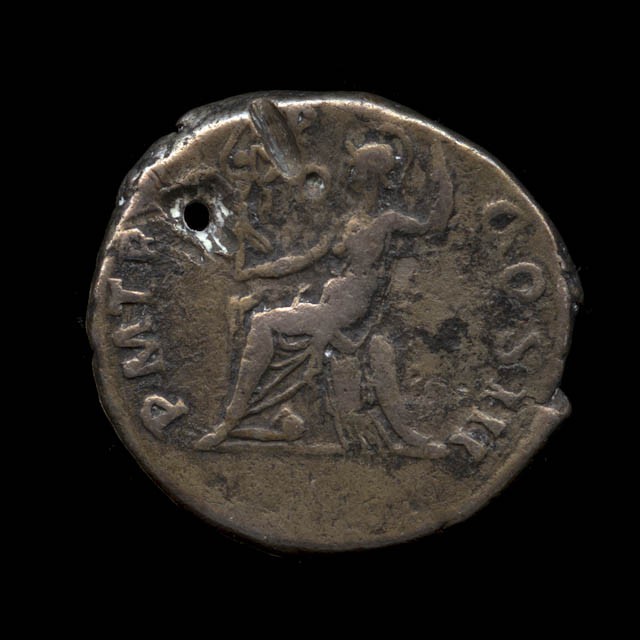
Collections Information
Maker(s): Hadrian (minted under) Culture: Roman; Imperial Title: Denarius of Hadrian Date Made: 119-122 CE Type: Coin/Money Materials: Silver (AG) Place Made: Europe; Italy; Rome Measurements: 19mm; 2.977g Accession Number: MH 2000.4.12d.INV Credit Line: Source and date of acquisition unknown Museum Collection: Mount Holyoke College Art Museum IMAGE DESCRIPTION: Obverse: Head of Hadrian right, laureate; IMP CAESAR TRAIAN HADRIAN AVG
Reverse: Roma, seated left on cuirass, holding victory and scepter; PMTRPOT COS III, SC belowThe first life of the Denarius of Hadrian began in Rome, in the early second century CE. Coinage was the most ubiquitous form of disseminating imperial imagery, and this denarius was no exception. This coin carries the social, cultural and political significance dating back millenia; sometime in its prolonged lifespan, the value shifted entirely from a relic of pecuniary function into an aesthetic artifact. The hole punched through the silver implies a rejection of the coin as accepted legal tender– the untarnished silver around the alteration signifies the recency of its creation. The person responsible for this modification is unknown, but their actions are not unique; somewhere along the historical continuum, the iconography of coins that once reinforced imperial power was appropriated for aesthetic uses. Instead of circulating, this coin was rendered sedentary, a piece of jewelry carrying a different– although arguably not lesser– value than its previous existence.
- 5 minute read
Ladle with George III sixpence
- 1 minute read
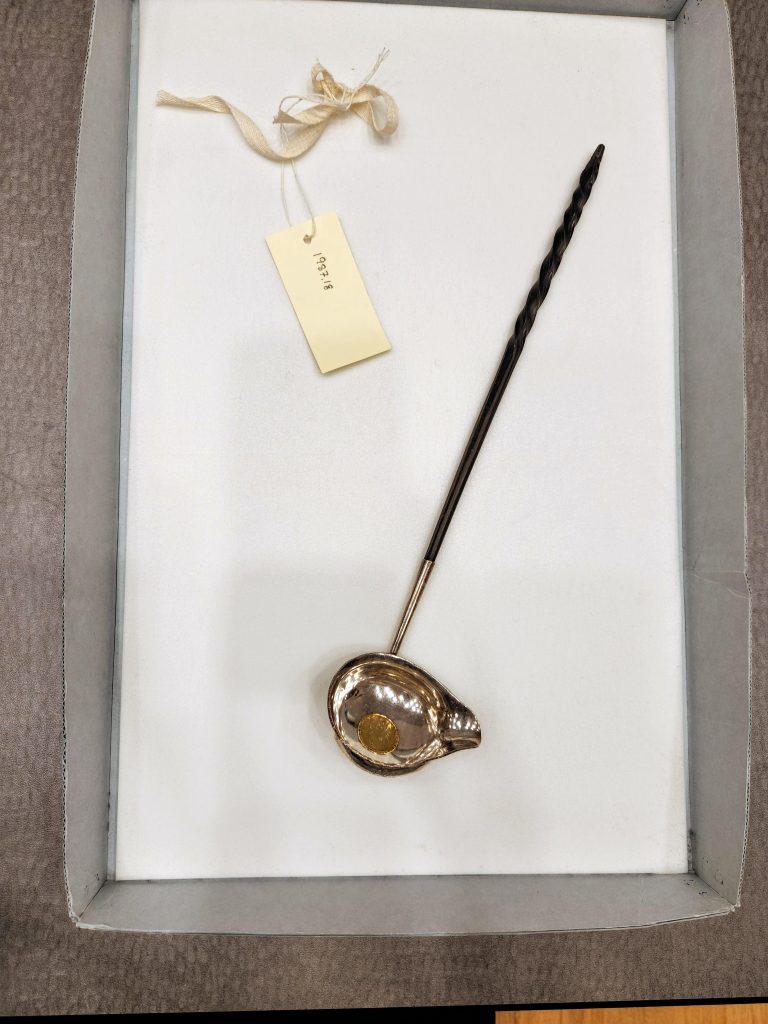
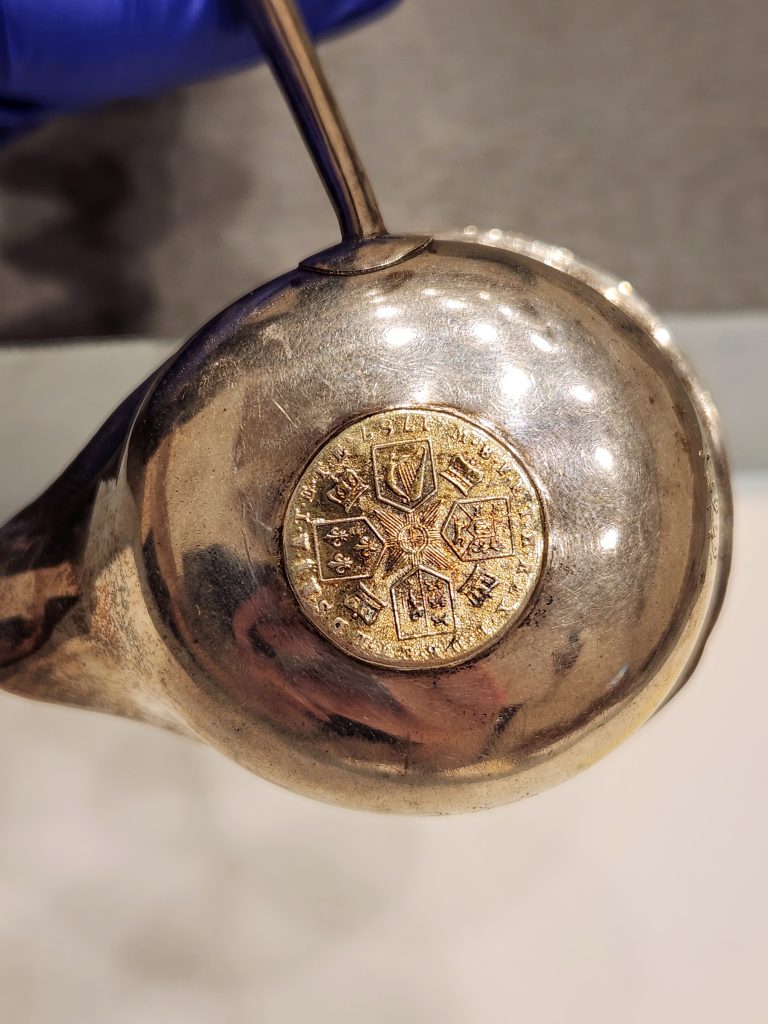

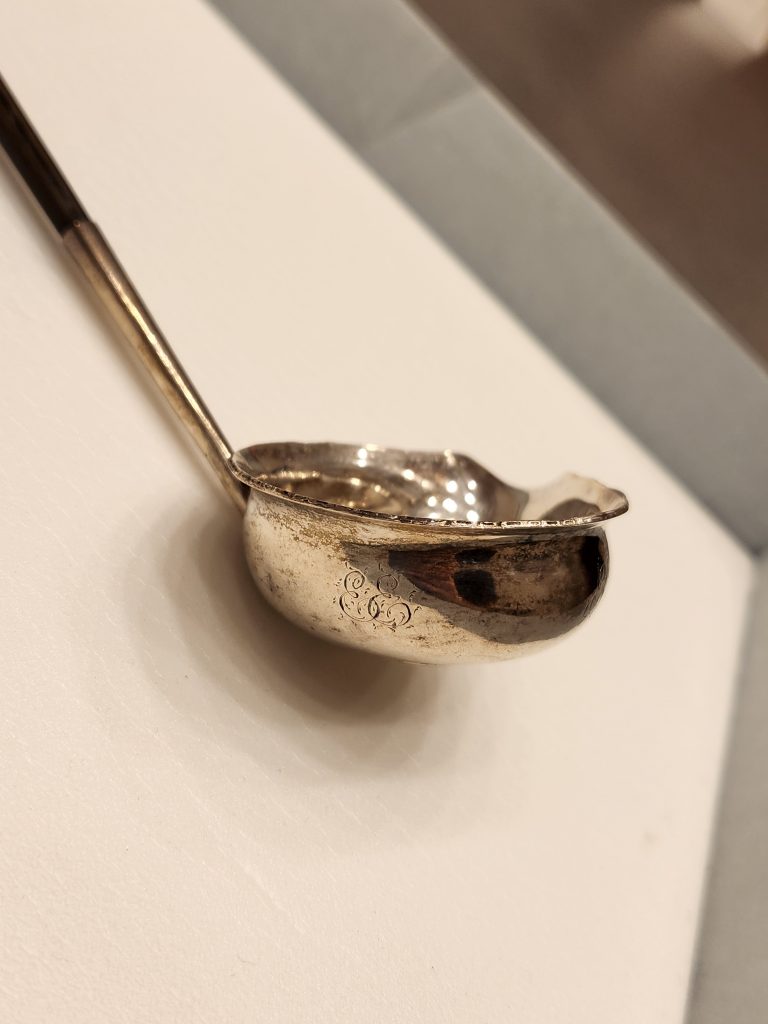
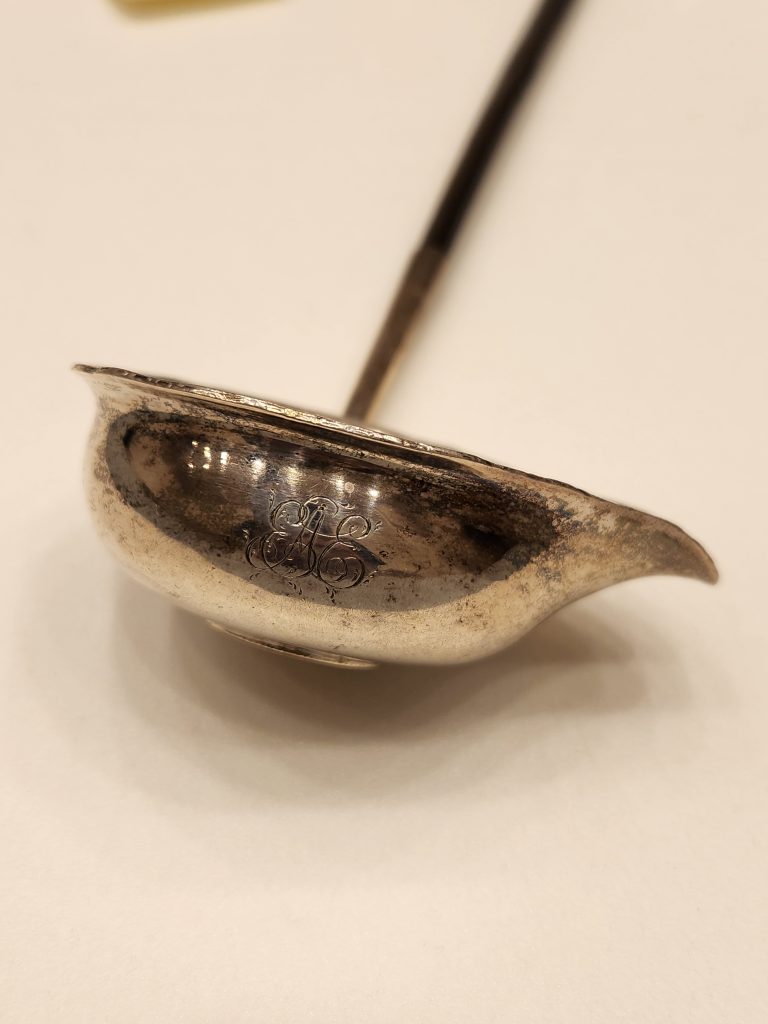
The ladle is thirteen inches tall when standing upright. According to the museum archives, the coin itself is made of gold, but the ladle is made of silver and the ladle handle is made from baleen, which is the keratin inside whales’ mouths used to filter their food. On the front of the outside of the ladle the letters E.A.E. are engraved, and on the left side are the letters E.E. The George III sixpence on the inside bottom of the ladle shows the obverse side of the coin that depicts King George III. The outside bottom of the ladle shows the reverse of the George III sixpence which displays four Cruciform shields, and between each of the shields are four crowns, all circling a Garter star in the middle (En.numista.com). The ladle with the George III sixpence was made at the earliest in 1787 and is English in origin. It cannot be determined for certain the date that this object as a whole was made.
- 6 minute read
Crown with Suffragette countermark minted under Victoria I
- 1 minute read
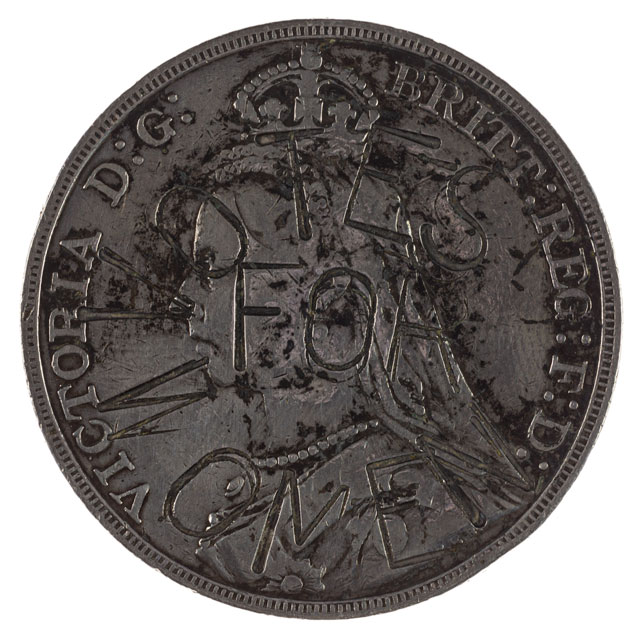
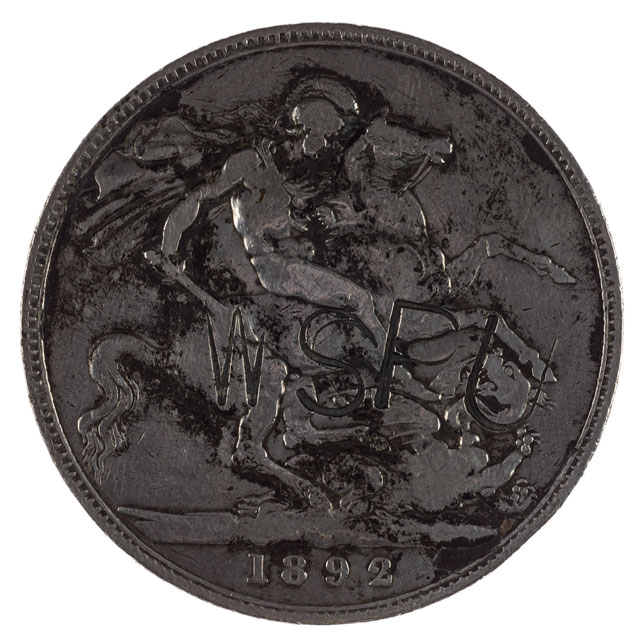
Examining this coin up close, it is hard to miss the words that have been stamped into it: “VOTES FOR WOMEN.” This coin circulated between 1887 and 1892, and was hand-stamped by members of the Women’s Social and Political Union, a group that fought for women’s suffrage in England. Coin countermarking was a form of propaganda that was used by suffragists for many years, as it was relatively inexpensive and easy to spread their message. However, the act of defacing currency was illegal, posing a risk to both the women participating in the movement and the ability of the coin to circulate. Nevertheless, the inscribed message was able to spread all across Britain as a part of everyday use.
Counter Box Made of Elizabethan Shillings
- 1 minute read
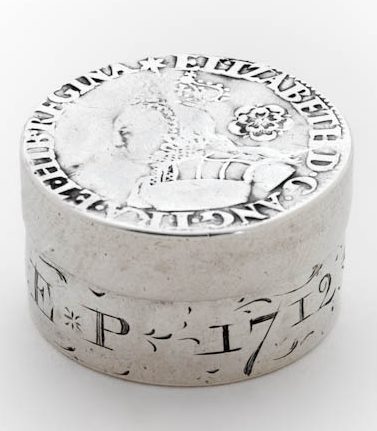
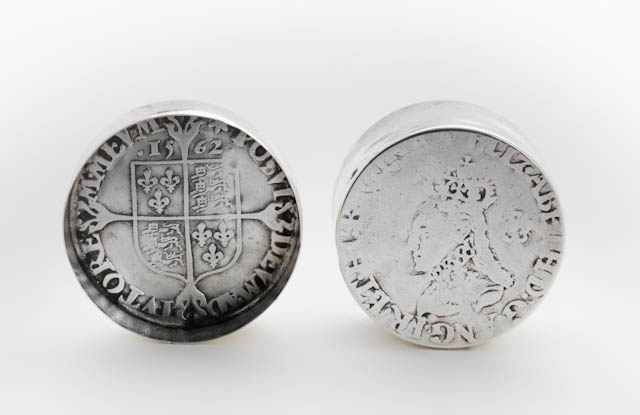
The displayed counter box, made in 1712 from coins minted during Queen Elizabeth I’s coinage reform, tells the story of two coinage value sources: the purity of the coin’s silver and the sovereign’s stamp granting authority. During her reign, Elizabeth I recalled, refined, and improved the standard of the metals used and reminted all of the country’s coinage, as Henry VIII had greatly debased the purity of the silver contained in them. Counter boxes like this were used by gamblers and were often decorated with visages of past monarchs. Containing gambling counters, counter boxes made from Elizabethan stamped coins with their reformed silver content provided a (veiled) integrity among gamblers wherein games were meant to be played honestly, with money won properly paid. The reformed silver content in the coinage contributed to saving the value of British currency while also serving as a social marker of legitimacy within gambling circles.
- 5 minute read

Comments are closed, but trackbacks and pingbacks are open.